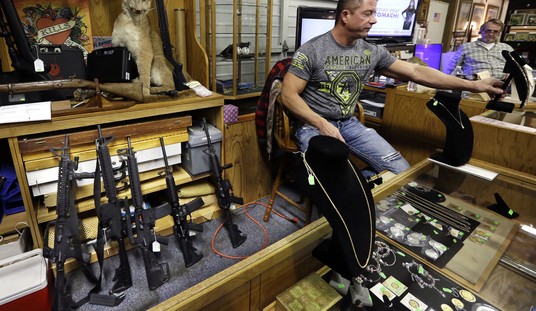It’s the fundamental premise of the gun control movement: more guns equals more crime. It isn’t hard to disprove that with even anecdotal evidence, like the fact that if that were the case then violent crime would be on a continual upward spiral, when it fact violent crime declined by about 50% between the early 1990s and 2020.
Still, it’s good to have some actual studies to back up that anecdotal evidence, and a new research paper authored by a number of M.D.’s and PhD’s does just that by doing a deep dive into the data on gun sales and violent crime rates to see if any patterns emerged.
According to the authors, a “robust analysis does not identify an association between increased lawful firearm sales and rates of crime or homicide.” In other words, more guns does not automatically equate to more crime.
The study examined both NICS records (as a proxy for gun sales) as well as violent crime statistics from the Department of Justice Uniform Crime Reporting (UCR) program and the Centers for Disease Control and Prevention (CDC) Web-Based Injury Statistics Query and Reporting System from 1999 to 2015. During that 17-year period there were nearly 225-million NICS checks performed, with the yearly averages rising dramatically after the election of Barack Obama in 2009. Violent crime rates during that same time period, however, were on a downward slide.
Overall 22.7 million violent crimes and 163.3 million property crimes were committed nationally during the study period; however, steady decreases in the incidences of both violent and property crime throughout the United States were demonstrated.
… Linear modeling demonstrated significant national trends in both the increased purchase/NICS check rates and decreases in all crime variables over the study period.
… Next, the state-to-state variability of specific rates was examined… Substantial variations in firearm purchase, crime, and public health rates existed between states. This variation was at times in excess of a 100-fold difference and persisted over the study period… All states demonstrated increases in firearm purchase/NICS check rates over the study period. Most states also demonstrated decreases in crime rates.
The authors of the new study report that, when adjusted for state, year, and NICS transaction rate, their final state-level analysis “yielded results, which did not rise to statistical significance for any crime variable studied”; i.e. there was no statistical significance to any change in violent crime that could be corollated with an increase in gun sales.
The study actually used several different modeling techniques to examine any potential relationship between crime and gun sales, and in none of them did gun sales appear to increase homicides. Instead, the simplest model used by researchers found an association between gun sales and a decrease in homicides, though the authors are quick to acknowledge that particular modeling may be too “simplistic.” Even the more sophisticated model that the researchers ultimately based their findings on, however, failed to turn up any relationship between the rising NICS checks and crime rates.
In their conclusions, the authors say they hope that this will help lawmakers when they wade into the debate over gun policy and public safety.
Based on this study, when policymakers consider targets for intervention to help reduce crime and violence committed with firearms, areas other than the legal purchases of firearms should likely be considered. As this subject involves multiple levels of impact including personal, local, regional, and national characteristics, multidisciplinary research, including aspects of medicine, public health, criminology, law, and economics would likely be beneficial. In the end, it is clear that further high-quality research is needed on violence prevention and specifically violence committed with firearms. As noted in a recent analysis on sources of disagreement among gun policy experts by the RAND corporation, “collecting stronger evidence about the true effects of policies is, the researchers believe, a necessary step toward building greater consensus on which policies to pursue.”
I’ve been in contact with one of the authors of this study and hope to have them on an episode of Bearing Arms’ Cam & Co in a few days to talk more about these findings. Until then, you can check out the paper for yourself right here, and be sure to share it with the other 2A supporters in your life and social networks. I doubt the mainstream media is going to give this new research the attention it deserves because it completely undercuts the gun control lobby’s narrative, so if we want to get the word out we’re going to have to do it ourselves.









